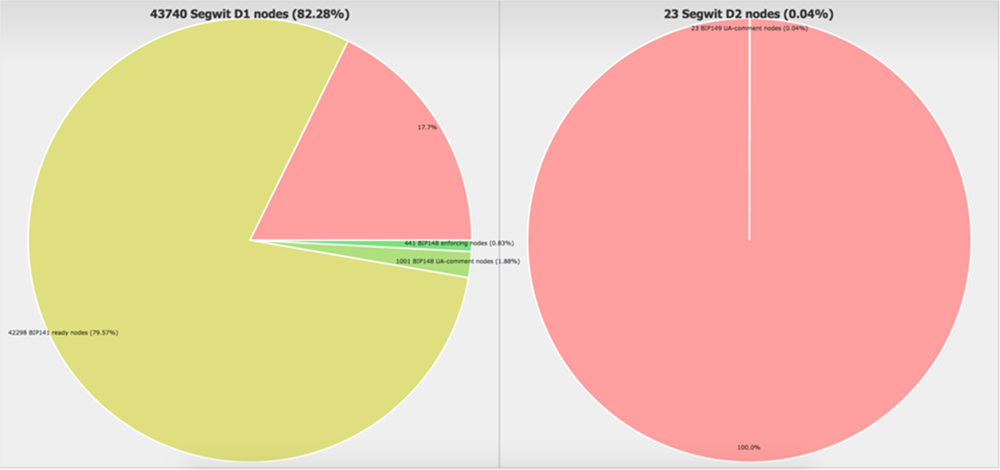BTC UASF in Aug 2017 - Understand BIP148 and Protect Your Money!!!

What the heck is BIP148? What is UASF? What does it have to do with BTC and how will it affect my money?
It's a crazy crypto world we're living in and it seems to be getting crazier every day without slowing down. Millions of people are rapidly flooding into the crypto market and that tells me that a large portion of the new and uneducated investors are sitting in a new world, with money in hand, vulnerable and waiting for something to go horribly wrong (whether they know it or not). Understanding the upcoming User Activated Soft Fork (UASF) (yes there will be a BTC fork! It will happen Aug 1st 2017) is extremely important to anyone interested in BTC at all, let alone wanting to hold BTC for any duration of time.
There will be a ton of people who sleep on this BTC update, and in turn, will most likely lose most if not all of there money if the proper actions aren't taken. Could this be good for BTC? YES!!! In the long-run, this is necessary for the curation and stabilization of BTC's scalability (It's ability to remain stable and efficiently usable with the rapid influx of users).
What is a UASF?
UASF stands for User Activated Soft Fork. It’s a mechanism where the activation time of a soft fork occurs on a specified date (8/1/17) enforced by full nodes (any computer that connects to the Bitcoin network is called a node. Nodes that fully enforce all of the rules of Bitcoin are called full nodes), a concept sometimes referred to as the economic majority. A UASF requires huge amounts of cooperation from the community as a whole and is considered good practice for an eventual hard fork, if needed, which requires even more cooperation and effort from the community.
In the past, a UASF was successfully carried out to activate the P2SH soft fork (BIP16). The UASF concept was combined with SegWit activation in the BIP148 proposal (upcoming soft fork) which can be found here: github.com/bitcoin/bips/blob/master/bip-0148.mediawiki.
UASF Signaling

What is a MASF?
MASF stands for Miner Activated Soft Fork. It’s a mechanism by which miners trigger activation of soft forks when a majority signals the readiness to upgrade. This allows for a faster activation time for the soft fork, leaving full nodes to upgrade at their leisure. This method is a tradeoff, because it puts trust in the hash power actually enforcing the new rules. If they do not, it can cause various invalid chains on the network. For example, this was the case with BIP66, when hashpower indicated they had upgraded when in fact more than 50% had not. The other tradeoff is that the method allows a small number of hash power to veto activation of the soft fork for everyone on the network. Overall, if everyone cooperates, this method is very convenient and has been used to successfully activate multiple soft forks in the past such as BIP65 CLTV and BIP112 CSV.
What is BIP148?
BIP148 is a UASF that is designed to cause the existing SegWit MASF deployment to cause activation in all existing SegWit capable node software (which currently is 80% of the network nodes). How does BIP148 Work? From August 1st, 2017, miners are required to signal readiness for SegWit by creating blocks with the version bit 1. This will cause all SegWit ready nodes, which make up over 80% of the network, to activate and begin enforcement. Link for reference: luke.dashjr.org/programs/bitcoin/files/charts/segwit.html. Miners must also check blocks prior to their own and ensure that they also signal for SegWit, and only build on those blocks.

What are the various scenarios that could happen from BIP148?
BIP148 requires support from the economic majority, particularly exchanges and wallets. If this does not occur, node software supporting BIP148 should not be run after August 1st as it will cause a chain split leading to the abandonment of BIP148. There are strong economic incentives in the Bitcoin system for nodes to cooperate and remain in consensus to prevent chain splits. If the economic majority is signalling as of August 1st, miners have many incentives to follow along. Not following along would make it difficult to sell coins mined after August 1st as the blocks would not be accepted by the economic majority. Essentially, miners would be producing an altcoin not recognized by users and exchanges, making them less useful and in lower demand.
Some miners could opt to ignore the BIP148 rule and attempt to split the chain, but this would require a majority of miners who would be out of consensus from the rest of the economic majority.
If a majority of hash power follows BIP148, all nodes will follow the chain regardless of if they are running BIP148. Non-compliant blocks will be orphaned. All SegWit nodes will eventually activate SegWit.
If a minority of the hash power (under 51%) follows BIP148, nodes running BIP148 will be fine, but those not running BIP148 will be out of consensus with the rest of the economy. In this scenario, the more of the economy that runs BIP148, the better. Miners will find it difficult to sell their coins leading economically motivated miners to start enforcing BIP148.
How can I make sure I am protected in the event of a chain split?
This will depend on what type of wallet you use. In the case of a wallet using a centralized service’s nodes, make sure the nodes their service uses are upgraded. In the case of something like Electrum, make sure the Electrum server you are using is upgraded. Ultimately, any non-fully validating wallet will derive information about balances from a fully validating node. You must take whatever steps you have to in order to ensure your wallet is connected to an upgraded BIP148 nodes.
Please do yourself and the overall cryptosphere the favor of educating yourself and others in order to create a more sustainable and growing community
- All info pulled from and available at: http://www.uasf.co/
- Join slack.bitcoincore.org and further develop your knowledge and involvement in this amazing community
- slack.bitcoincore.org #UASF for general talk #UASF-SUPPORT for people who want to setup their BIP148 node
Brilliant!